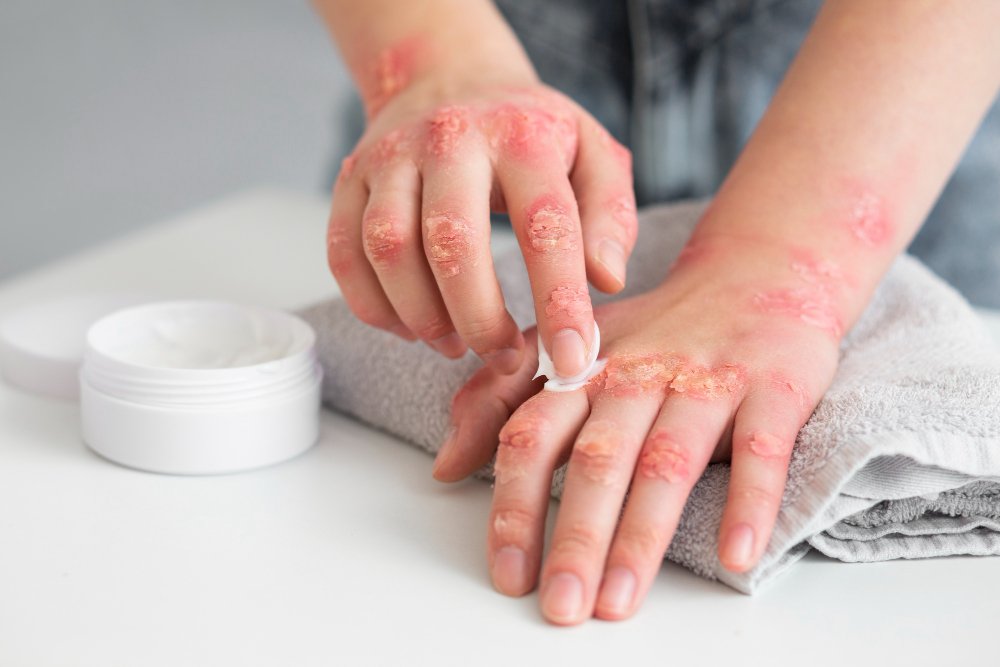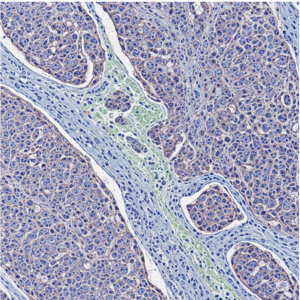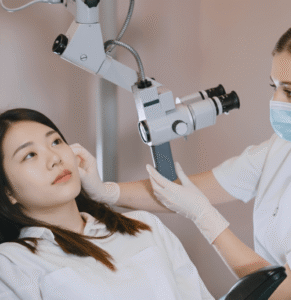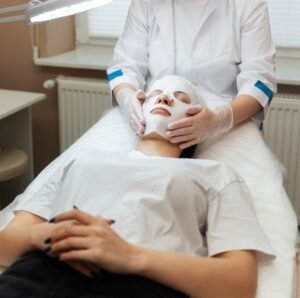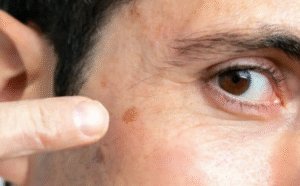Overview
Allergic dermatitis, also known as allergic contact dermatitis or eczema, is a skin reaction triggered by exposure to allergens. It leads to itching, redness, swelling, and sometimes blistering of the skin. While it is not life-threatening, it can significantly affect quality of life and may become chronic if not managed properly. In South Korea, a growing number of cases are linked to environmental pollution, cosmetics, and lifestyle allergens.
What is Allergic Dermatitis?
Allergic dermatitis is a type IV hypersensitivity reaction of the skin that occurs when the immune system reacts to substances (allergens) that come in contact with the skin. These reactions are delayed, typically appearing 24–72 hours after exposure.
Unlike irritant contact dermatitis, which can affect anyone exposed to a strong irritant, allergic dermatitis only occurs in individuals who are sensitized to specific allergens.
Symptoms
- Red, inflamed skin
- Intense itching
- Swelling or puffiness
- Dry, scaly, or cracked skin
- Blisters or weeping lesions
- Skin thickening from chronic scratching (lichenification)
- Burning or stinging sensation
- Commonly affected areas: hands, face, neck, eyelids, wrists, and feet
Causes
Allergic dermatitis is caused by direct skin contact with allergens. Common allergens include:
- Nickel (jewelry, watches)
- Fragrances and preservatives (in cosmetics and skincare products)
- Hair dyes
- Latex
- Rubber and adhesives
- Plants like poison ivy, oak, or ginkgo
- Household cleaning agents
- Textiles or clothing dyes
- Pollutants and industrial chemicals
Risk Factors
- Personal or family history of allergies, eczema, or asthma
- Frequent use of cosmetics or personal care products
- Occupational exposure (hairdressers, healthcare workers, cleaners)
- Living in urban areas with higher pollution levels
- Weakened skin barrier (e.g., dry or damaged skin)
Complications
- Chronic eczema: Repeated flare-ups leading to long-term inflammation
- Secondary skin infections: From scratching and open lesions
- Scarring or skin discoloration
- Psychological impact: Anxiety, embarrassment, or sleep disturbance
- Reduced productivity: Especially when hands or visible skin is affected
Prevention
- Identify and avoid allergens: Through patch testing and lifestyle adjustments
- Use hypoallergenic skin products
- Moisturize regularly to strengthen the skin barrier
- Wear gloves and protective clothing when handling potential irritants
- Avoid over-washing or using hot water, which dries the skin
- Patch test new products before full application
Treatment Options in Korea
South Korea provides world-class dermatological care for allergic dermatitis through advanced skin testing, personalized treatment, and modern facilities. Key options include:
1. Diagnosis & Allergy Testing
- Patch testing: To identify specific allergens
- Skin biopsy (in severe or unclear cases)
- Available at top dermatology hospitals such as:
- Seoul National University Hospital
- Yonsei Severance Dermatology
- Asan Medical Center
2. Medication
- Topical corticosteroids: To reduce inflammation during flare-ups
- Topical calcineurin inhibitors (e.g., tacrolimus, pimecrolimus): For sensitive areas like the face
- Oral antihistamines: For itch relief
- Oral corticosteroids: For severe reactions (short-term)
- Immunomodulators: In chronic or steroid-resistant cases
3. Skin Barrier Therapy
- Medical-grade moisturizers (ceramide-based)
- Korean skincare products for sensitive skin (e.g., Atobarrier, Illiyoon)
4. Phototherapy (Light Treatment)
- Narrow-band UVB or PUVA therapy for chronic dermatitis
- Offered in specialized skin centers
5. Lifestyle & Skin Care Guidance
- Dermatologists in Korea often provide personalized skincare routines
- Education on avoiding allergen exposure and protecting skin health

